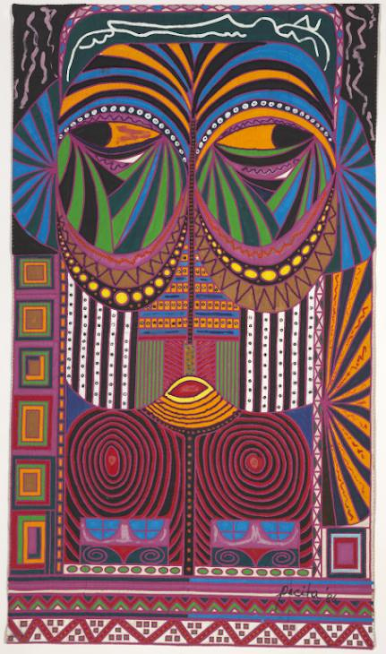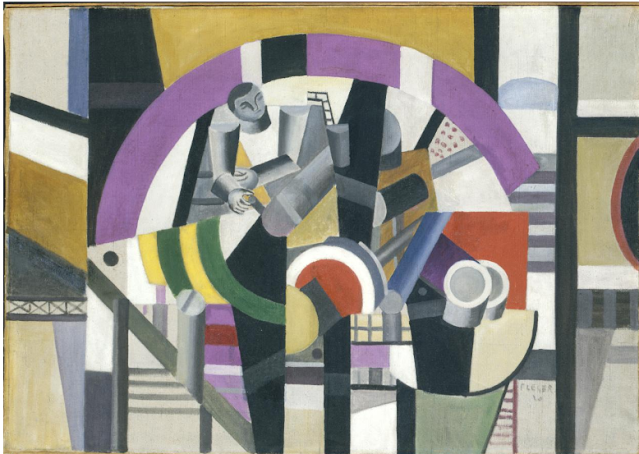Pacita Abad, "Bacongo III"
I thought I would bring you a lot of color this week and an image that is almost symmetrical. This is another new artist to me, and one worth getting to know. She was Pacita Abad (1946-2004).
This is not a "painting" in the usual sense, but a multi layered quilted canvas work. Abad combined multi cultural traditions from Asia, Africa, Latin America and her native Philippines to design and create her art. Besides stitched fabric she also painted on the canvas, plus adds such things as buttons, beads, shells, and mirror pieces. So, the resulting artwork is an almost three dimensional design to delight the eye.
Our image for today is one of 3 of a series which she began in the 1970's and completed this one in 1986. I have not been able to discover what "Bacongo" means, but I will venture a guess that maybe it is this person's name. This work is so much more than an image of a person. It is almost like the figure was simply a starting point for design development. It is easy to guess what different parts of the work could be, but I hate to get to specific not wanting to detract from the whole.
This work reminds me a little of the Futurism painting by American artist, Joseph Stella, "The Brooklyn Bridge" where he took the bridge and designed a complete, almost symmetrical work from it. In that work, too, a great graphic base was included and a lot of forms related to parts of the bridge.
Pacita Abad has an interesting history. She was born in the Philippines but came to this country for her education, and as this work is an example, was able to travel extensively learning about native traditions found in many parts of the world.
"Bacongo III" is a quilted canvas completed in 1986. It measures 2630 x 1495 mm and is part of the permanent collection of the Tate Gallery, London.
Make Art a part of your life, it's a beautiful thing to do.




This is so interesting and I try to imagine which designs come from which culture. The work reminds me of the reverse applique patterns, done in layers, by the Kuna Indians of Panama.
ReplyDeleteI am drawn to the irregular lines at the top, that are in contrast to the rest of the panel which seems so meticulously arranged. It would be awesome to see in reality!! The bright colors and prominent eyes make it a stunning work of art. I like it!